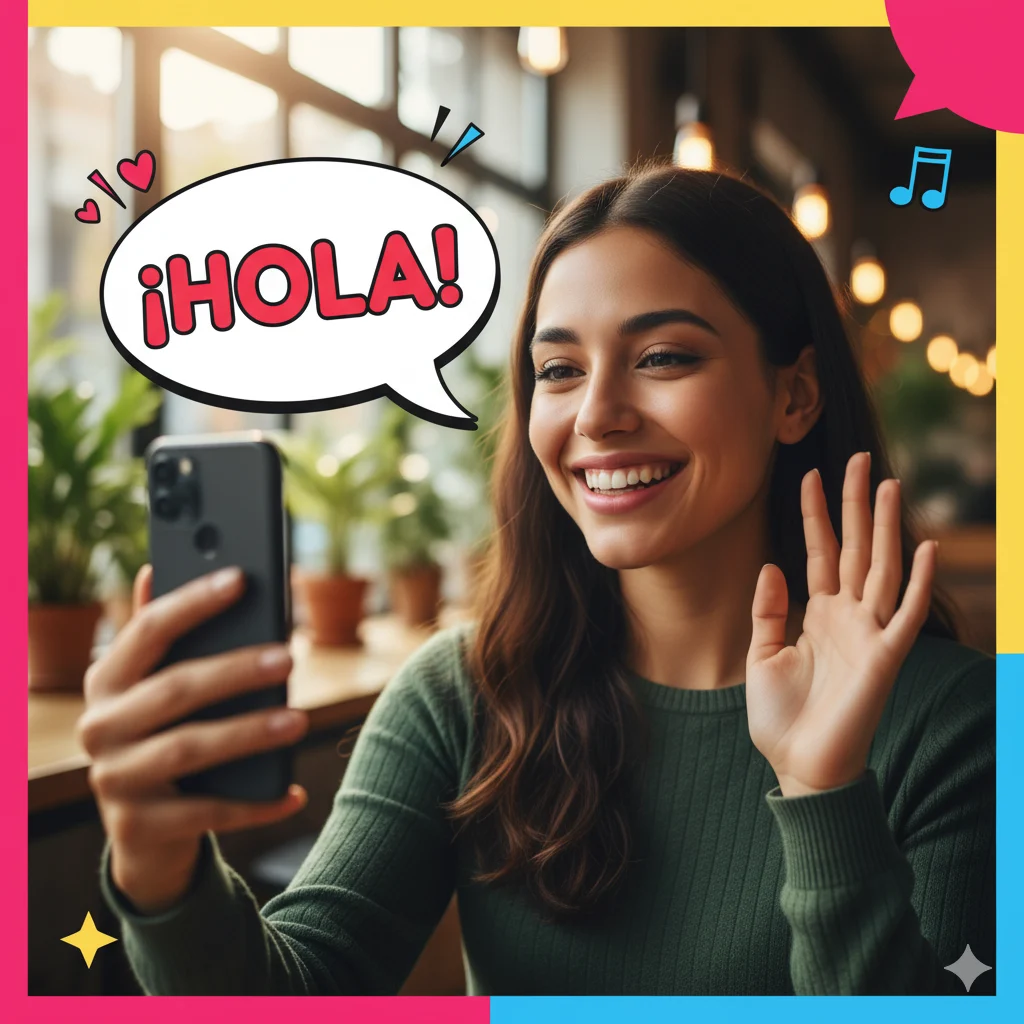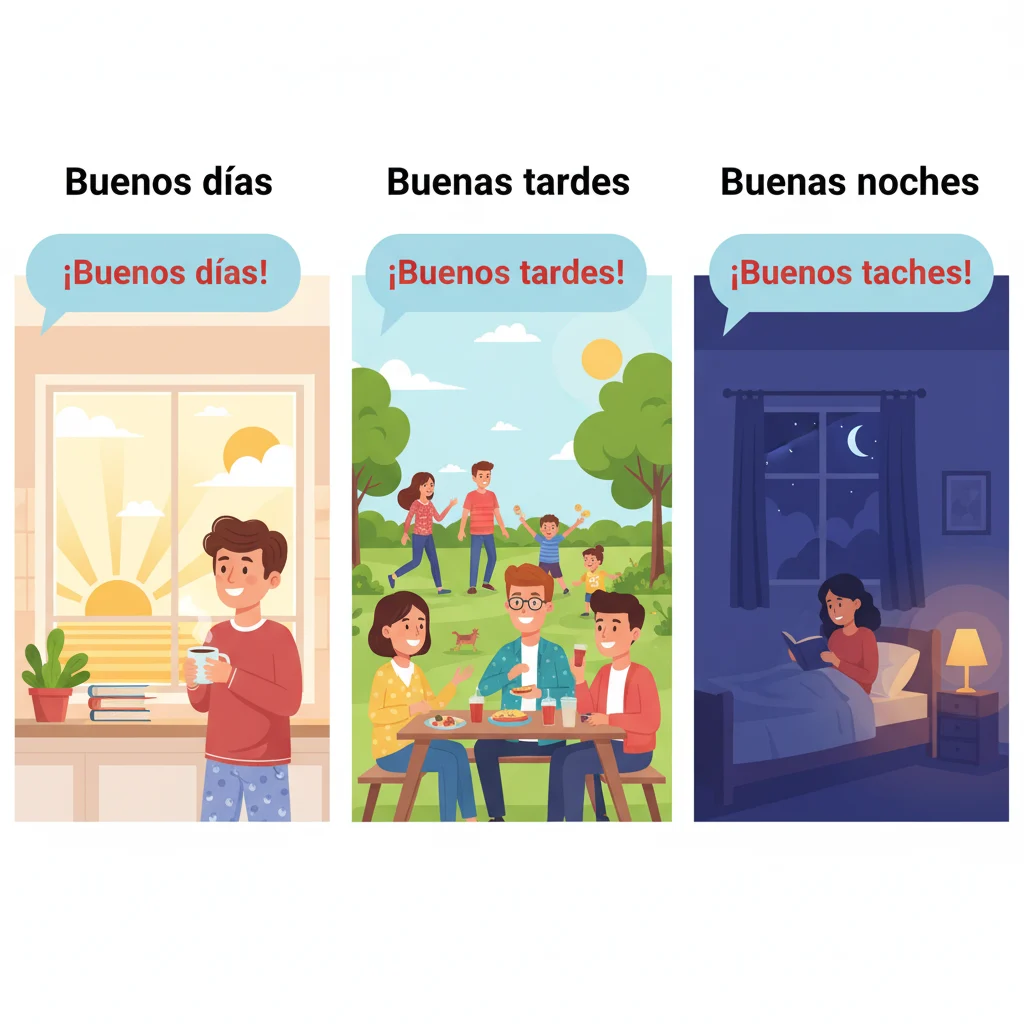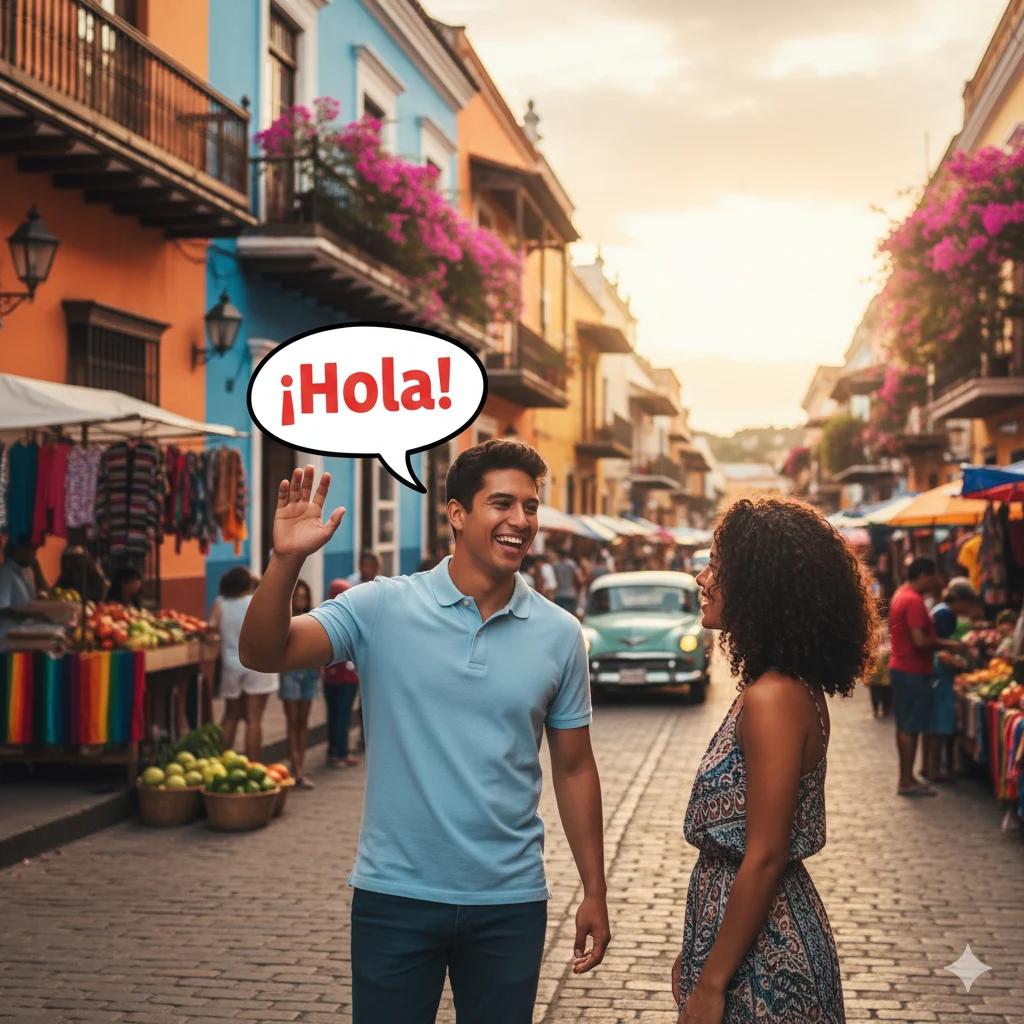Learning how to say hi in Spanish is one of the most rewarding and fun parts of discovering a new language. Whether you’re planning a vacation in Spain, meeting Spanish-speaking friends, or chatting online, a simple greeting opens the door to connection. But Spanish greetings aren’t just “hola” — they vary by time of day, setting, tone, and relationship.
In this guide, you’ll learn how to say hi in Spanish naturally, how to respond, and how to choose the right greeting for every situation — from casual hellos to polite introductions. Let’s dive in and make your first Spanish conversation memorable!
Understanding the Power of Greetings in Spanish Culture 🇪🇸
In Spanish-speaking countries, greetings go beyond simple words — they reflect warmth, friendliness, and respect. Saying hello correctly can make a big difference in how you’re perceived.
Here’s why learning to greet properly matters:
- It shows respect for culture and tradition.
- It helps you build positive first impressions.
- It allows you to connect naturally with locals.
- It’s the first step toward confidence in conversation.
- It’s an easy way to start learning more Spanish phrases.
Whether you’re in Madrid, Mexico City, or Miami, a warm “¡Hola!” always goes a long way.
1. The Universal Greeting: “Hola”
The most common and universal way to say hi in Spanish is “Hola” (OH-lah) — meaning “hello.” It’s friendly, simple, and works in almost every situation.
Use “Hola” when:

- Meeting someone for the first time.
- Greeting friends or coworkers.
- Starting a phone or video call.
💡 Tip: In Spanish, the “h” is silent, so don’t pronounce it! Just say “OH-lah.”
You can also make it warmer by adding:
- “Hola, ¿cómo estás?” – “Hi, how are you?”
- “¡Hola! ¿Qué tal?” – “Hey! What’s up?”
- “¡Hola, buenos días!” – “Hi, good morning!”
2. Time-Based Greetings: Saying Hi by the Time of Day ☀️🌙
In Spanish, greetings often change depending on the time of day. Here’s how to adjust your “hi”:

| Time of Day | Spanish Greeting | English Meaning |
|---|---|---|
| Morning | Buenos días | Good morning |
| Afternoon | Buenas tardes | Good afternoon |
| Evening/Night | Buenas noches | Good evening / Good night |
Examples in sentences:
- “Buenos días, señor García.” – Good morning, Mr. García.
- “Buenas tardes, Marta. ¿Cómo estás?” – Good afternoon, Marta.
- “Buenas noches, amigos.” – Good evening, friends.
These greetings can also serve as polite ways to say both “hi” and “goodbye.”
3. Casual and Friendly Ways to Say Hi in Spanish 😄
Sometimes, you want your greeting to sound more relaxed or youthful. Spanish has plenty of casual alternatives to “Hola.”
Here are a few popular ones:

- “¿Qué tal?” – What’s up? / How’s it going?
- “¿Cómo va?” – How’s it going?
- “¡Hey!” – A borrowed but popular casual greeting.
- “¡Buenas!” – Short for “Buenas tardes/noches” — very common in Spain.
- “¿Qué onda?” – Mexican slang for “What’s up?”
- “¿Qué pasa?” – Literally “What’s happening?” or “What’s up?”
Example:
- “¡Hey, Luis! ¿Qué onda?”
- “¡Buenas! ¿Cómo va todo?”
These phrases sound friendly, spontaneous, and are perfect for informal conversations with friends or peers.
4. Polite and Formal Greetings in Spanish 🤝
When speaking with strangers, elders, or in professional settings, it’s better to use polite greetings that show respect.
Formal options include:
- “Buenos días, señor/señora.” – Good morning, sir/ma’am.
- “Mucho gusto.” – Nice to meet you.
- “Encantado/a.” – Pleased to meet you (masculine/feminine).
- “Es un placer conocerle.” – It’s a pleasure to meet you.
These phrases demonstrate manners and respect, aligning with the cultural importance of courtesy in Spanish-speaking societies.
5. Regional Variations in Saying Hi 🌎
Spanish is spoken in over 20 countries, so greetings naturally vary across regions. Let’s look at a few local twists:
| Country | Common Greeting | English Meaning |
|---|---|---|
| Mexico | ¿Qué onda? | What’s up? |
| Spain | ¡Buenas! | Hi / Hello |
| Argentina | ¿Qué hacés? | What are you doing? / What’s up? |
| Colombia | ¡Quiubo! | Hey! / What’s up? |
| Chile | ¿Cómo estai? | How are you? (informal) |
| Puerto Rico | ¿Qué hay? | What’s new? |
Using these expressions makes your Spanish sound more natural and regionally aware — a great way to connect with locals.
6. How to Respond When Someone Says Hi in Spanish 🙋♀️
Knowing how to greet is one thing — responding naturally is another.
Common responses include:
- “¡Hola!” – Hello!
- “¡Hola! ¿Cómo estás?” – Hi! How are you?
- “¡Bien, gracias! ¿Y tú?” – Fine, thank you! And you?
- “Todo bien.” – All good.
- “Muy bien, gracias.” – Very well, thank you.
Example:
A: ¡Hola! ¿Qué tal?
B: ¡Hola! Muy bien, gracias. ¿Y tú?
These polite responses make your conversation flow smoothly and naturally.
7. Saying Hi in Texts or Online 💬
When chatting online or texting, Spanish speakers often shorten greetings or add fun emojis.
Popular text greetings:
- “Holaaa” – Adding extra letters for friendliness.
- “Oli” / “Holis” – Cute or playful versions (mostly used by teens).
- “Heyy” – Informal, borrowed from English.
- “¡Buenas!” – Works great in chat too!
Example:
“Holaaa 😄 ¿Cómo estás?” feels warm and casual — perfect for friends.
8. Greeting Groups or Crowds 👋
When addressing more than one person, switch to the plural form:
- “Hola a todos.” – Hello everyone.
- “Buenos días a todos.” – Good morning everyone.
- “¡Hola chicos!” – Hi guys!
- “¡Buenas tardes a todas!” – Good afternoon, ladies!
This is great for classrooms, teams, or social gatherings.
9. How to Say Hi Without Words 🫶
Sometimes, gestures do the talking. In Spanish cultures, greetings often include physical warmth:
- A handshake (formal situations).
- A kiss on one or both cheeks (in Spain and Latin America).
- A friendly hug among close friends.
Understanding these cultural cues helps you greet with confidence and avoid awkward moments.
10. Common Mistakes to Avoid When Saying Hi in Spanish ⚠️
Even simple greetings can go wrong if used incorrectly. Here’s what to watch for:
- Don’t pronounce the “h” in “hola.”
- Avoid using informal greetings in professional situations.
- Don’t skip accents — they can change meanings (e.g., sí vs. si).
- Never say “Buenas días” — it’s Buenos días (masculine plural).
- Don’t forget regional differences — “¿Qué onda?” might confuse someone in Spain.
Mastering these small details ensures your greeting sounds fluent and natural.
FAQs
Q1: What’s the difference between “Hola” and “Buenos días”?
“Hola” means “hi” anytime; “Buenos días” is specifically “good morning.”
Q2: Can I say “Hola” at night?
Yes, but “Buenas noches” sounds more natural for evening greetings.
Q3: What is the most polite greeting?
“Buenos días, señor/señora” is formal and respectful.
Q4: How do young people greet each other in Spanish?
They often say “¿Qué onda?” or “¿Qué tal?” for a casual “what’s up.”
Q5: How should I greet someone I just met?
Start with “Hola, mucho gusto” (Hi, nice to meet you).
Conclusion 🌟
Learning how to say hi in Spanish opens a world of communication and connection. From formal greetings to casual slang, you now know the right phrases for any situation. Whether you say “Hola,” “Buenos días,” or “¿Qué tal?”, each word carries warmth, culture, and friendliness. Keep practicing these greetings, and soon, you’ll sound natural and confident when speaking Spanish anywhere in the world.



